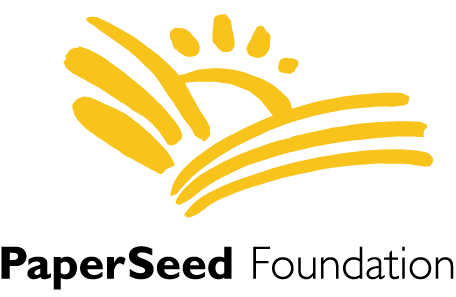Summer 2016: The State of Girls' Education
/Last September, world leaders committed to the Sustainable Development Goals. Since then, there has been a great deal of discussion around reaching those goals. What will it take? Who will lead us there? How can we collaborate to make these goals a reality? What steps do we take this year, next year, and five years from now?
Many individuals and non-profit organizations have chosen a specific goal or two to champion and work toward. The PaperSeed Foundation took up Goal 4: Quality Education, and Goal 5: Gender Parity. To us, there is no quality education without gender parity, and gender parity is impossible without quality education; the two ideals are dependent on one another.
Consider that gender parity is not yet a reality in the United States, where women are underrepresented in politics, technology, and media, paid less for equal work, and held back from achieving executive level positions. What will it take to get women and girls on truly equal footing?
The landscape shifts considerably from country to country; each culture has their own obstacles to overcome. In many countries, girls are routinely denied education. In some cases, that denial is clear and overt: girls have no use for education, or it is improper for them to leave home and go to school. In other places, it is a matter of survival. Girls need to fetch water, help keep the home, take care of younger or infirm family members. They have no time to go to school, because they must work, and help the family earn a living. They are unable to attend school when they begin mensturation, because they cannot afford sanitary pads, or their culture believes that they are unclean and keeps them secluded.
This is the state of girls' education in the summer of 2016. Though we have made great strides over the past few decades, there is still a great deal of work to do. But, there is hope. Today more than ever before there are a veritable host amazing role models for girls to look up to, like the fearless Malala Yousafzai. Women are also becoming more visible in traditionally male-dominated roles, and that visibility enables girls to see themselves stepping into these careers.
As a grant-making foundation, we have our work cut out for us. Work like ours takes a two-pronged approach: making greater connections with business partners with initiatives like our CSR services, and finding local leaders and NGO partners—at home and abroad—who have innovative ideas for solving big issues. And, as we head into the second half of 2016, we are working to integrate the Sustainable Development Goals more wholly into our organization’s focus.
Thanks to the outstanding work of Kenya-based grantee partners, ZanaAfrica, and their pad distribution program, girls in Kenya are regaining the school days they would have lost. This is our fourth year working with ZanaAfrica, and we are so proud to continue our innovative connection with Fr. Meyer's Sohn, East African Packaging Industries, and Megasoft to deliver the sanitary pads needed to make this program a success. ZanaAfrica recently completed one of three yearly pad distribution and health management trainings with 13 of their local partner organizations, creating a ripple effect of change for girls in East Africa.
Great Pad Giveaway participants in Kisumu, January 2016.
We have also partnered once more with Generation Guiders to support their second annual all-girls football tournament. This tournament aims to empower girls and bring visibility to girls’ sports. In India, we are primed to reach 75,000 students—boys and girls—by working with Girl Rising India on their exciting new school campaign. Their multimedia module will be delivered to teachers and students alike, and aims to change the perception of what a girl is capable of.
Fierce competition at the 2015 International Day of the Girl Football Tournament!
Though there is no magic wand we as a connected world can wave to achieve the SDGs, quality education is certainly a key component in making each and every other goal a reality. Education fosters peace and boosts economic growth, and educated people experience less poverty, have fewer health risks, and are better equipped to manage their fertility. One additional year of school can increase a girl’s earnings by 10-20%. We’re proud to support innovative projects that break down barriers to education, especially for girls. By supporting innovative and sustainable projects that strengthen education, we believe that gender equality will at last become a reality for girls around the world.





